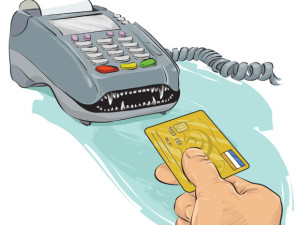 Over time credit cards have become one of the most popular finance options. Their flexibility means that they can be used in almost any financial situations; whether you’re looking to spread the repayments of a large purchase, spend money overseas, build your credit history or earn loyalty points or rewards on transactions.
Over time credit cards have become one of the most popular finance options. Their flexibility means that they can be used in almost any financial situations; whether you’re looking to spread the repayments of a large purchase, spend money overseas, build your credit history or earn loyalty points or rewards on transactions.
Unfortunately though, when they are not managed properly credit cards can cause real financial problems – and because of their relatively high interest rates; the longer you leave it the worse it gets. Throughout this article we are going to run through a 5 step guide to how you can overcome credit card debt and get your finances back on track:
Step One: Calculate how much you owe
Although it may be tough to face the reality of your problems, this is ultimately the first step to overcoming your debt. So, find your most recent statements and see how much you have outstanding on each card. Until you are debt free it’s definitely a good idea to stay away from spending anymore on your cards.
When noting down all outstanding balances it may also be a good idea to include the interest you’re being charged highlighting any interest free deals or bonuses that you are currently benefiting from.
Step Two: Create/ recreate your budget
There are three possible reasons you got into debt in the first place:
1. You overspent month on month
2. Your budget wasn’t effective
3. You didn’t have a budget
Whatever the root cause of your problems, you need to draw a line underneath it and work on putting things right. The single most effective way of doing this is by creating an effective monthly budget.
To do this you firstly need to note down all sources of income that you’re receiving month-on-month. This will include your mainsalary, any other jobs you may have, anything you may be earning on savings or investments and finally any benefits or tax credits you may earn. Having added all of these together you now need to calculate your level of outgoings.
In order to determine how much you are spending throughout the month you firstly need to gather as many recent bank statements as you can. Arguably the most effective way of listing your outgoings is to split them into compulsory, essential and luxuries. Your compulsory outgoings will be payments that you make each month without fail, so things like: your rent or mortgage, utilities, council tax, loan repayments and insurance costs. Your essentials are things that you couldn’t get by without but often differ in cost each month, such as food, petrol, mobile phone and broadband bills, car maintenance costs, TV licence and parking costs. Finally, you luxuries are things that you don’t necessarily need such as entertainment costs, night outs, dining out, gym memberships, holidays and gifts.
It will be evident by simply looking at your bank statements whether each expense differs on a monthly basis or stays the same. For those expenses that differ, take an average from the past three months and if you’re in any doubt always overcompensate.
Your final step is to calculate your disposable income; this simply involves deducting your total monthly outgoings from your total monthly income.
Step Three: Adjust your budget
Now it’s time to make some adjustments to your budget in order to increase your level of disposable income. There are two ways of doing this; increase your income or decrease your outgoings. Decreasing your level of outgoings will be the simplest way of doing this, and your first stop should always be the luxuries section. By simply reducing the amount you spend on eating out, takeaways and seasonal gifts you could find yourself £100 better off over the course of the month.
Always assess your subscriptions too; do you get the most out of your gym membership? Do you really watch TV enough to warrant having Sky TV? Remember, the more you can save the more you can put towards credit card repayments and subsequently the quicker you can get debt free.
Step Four: Calculate how much you can afford to contribute each month
Now that you know how much money you have left over at the end of each month you can start to calculate how much you can contribute to repayments. Often the most effective way of getting debt free is by snowballing your debts. Snowballing is basically just the process of paying off debt in order of interest rate (from highest to lowest). So while you may only be paying the minimum payment on three of your cards, you are taking large chunks off the balance of your highest interest card.
It may be tough at first, but you need to condition yourself to churn any additional disposable income into your credit card debt. So, if you get a bonus at work or do some overtime then this needs to go towards your credit card repayments. The lower your level of debt gets the easier it will become.
Step 5: Keep your eye on the prize
There are temptations to spend every day you just need to ensure that you keep your eyes firmly on the prize of getting debt free. The rewards of being debt free will feel so much better than the five minutes of joy you get from an impulse buy.
Tags: budgeting, Credit Card, Credit Card Debt, Debts, economy, Financial Problem, money
Recent Comments